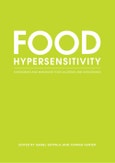Offering advice for treating children and adults in one book and written in an accessible style, the book is split into three main sections:
- Diagnosis
- Dietary management
- Allergy prevention and nutritional considerations
This exceptional volume is essential reading for all dietitans, nutritionists, paediatricians, allergists, family practitioners, GPs, practice nurses, health visitors and other health care professionals who work in this area or have an interest in food allergy. The book is also an excellent reference for undergraduate and postgraduate students studying allergy, immunology or nutrition and dietetics. Libraries in all universities and research establishments where nutrition, dietetics, food science, medicine and health sciences are studied and taught should have copies of this important work on their shelves
Table of Contents
Part One – Diagnosis1. Introduction
1.1 Nomenclature
1.2 Classification
1.3 Symptoms associated with FHS
1.4 Prevalence
2. The role of food hypersensitivity in different conditions
2.1 Food Hypersensitivity and the Skin
2.2 The Role of Allergy and Intolerance in Respiratory Conditions
2.3 The Role of Allergy and Intolerance in Gastrointestinal Disorders
2.4 The Role of Allergy and Intolerance in Behavioural Disorders
2.5 The Role of Allergy and Intolerance in Neurological Disorders
2.6 Food Hypersensitivity and Musculo–skeletal Diseases
3. The Diagnosis of Food Hypersensitivity
3.1 Clinical History
3.2 Diagnostic tests
3.3 Complementary and Alternative Medicine
3.4 Diagnostic Exclusion Diets
3.5 Oral Food Challenges
4. Triggers of Food Hypersensitivity
4.1 Allergens and the immune system
4.2 Food allergen classes and nomenclature
4.3 How does a food allergen induce allergy?
4.4 Classification of food allergens
4.5 Advances in Food Allergen technology
4.6 Peanut Allergens
4.7 Food labelling
Part Two Dietary Management
5. Milk and Eggs
5.1 Cow s Milk
5.2 Egg Allergy
6. Seafood
6.1 Prevalence and natural course of the condition
6.2 Foods involved
6.3 Diagnosis
6.4 Avoidance
7. Fruits and vegetables
7.1 Prevalence and natural course of the condition
7.2 Foods involved in fruit and vegetable allergy
7.3 Presenting Symptoms and Diagnosis
7.4 Management
8. Peanuts, Legumes, Seeds and Tree Nuts
8.1 Peanuts
8.2 Other Legumes
8.3 Seeds
8.4 Tree nuts
9. Cereals
9.1 Coeliac Disease
9.2 Allergy to Wheat and other Cereals
10. Other causes of food hypersensitivity
10.1 Reactions to Food additives
10.2 Pharmacologic Food Reactions 10.3 Food–dependant exercise–induced anaphylaxis
Part Three– Other aspects of management, allergy prevention and nutritional considerations
11. Nutritional consequences of avoidance and practical approaches to nutritional management
11.1 Assessment of dietary adequacy
11.2 Factors affecting nutritional status
11.3 Ensuring optimal nutritional status while following a food avoidance diet
11.4 The Nutritional consequences of avoiding a number of common food allergens
11.5 Vitamin and mineral supplements
11.6 Other common nutritional issues encountered when implementing food avoidance diets
12. Lifestyle issues
12.1 The burden of anaphylaxis and food allergy
12.2 The importance of reintroduction of foods
12.3 Cross contamination
12.4 Items on prescription
12.5 Recipe information
12.6 Product informa 12.7 Awareness products
12.8 Nurseries/Childminder
12.9 Managing food allergy at school
12.10 Managing food allergy at home
12.11 Managing food allergy at work
12.12 Eating Out
12.13 Going on holiday
12.14 Support and resources
13. Allergy prevention and role of nutrition on the immune system
13.1 Introduction to the immune system
13.2 Supporting the immune system through nutrition
14. Management of Allergic Disease
14.1 Allergic Rhinitis
14.2 Asthma
14.3 Atopic Eczema
14.4 Anaphylaxis








